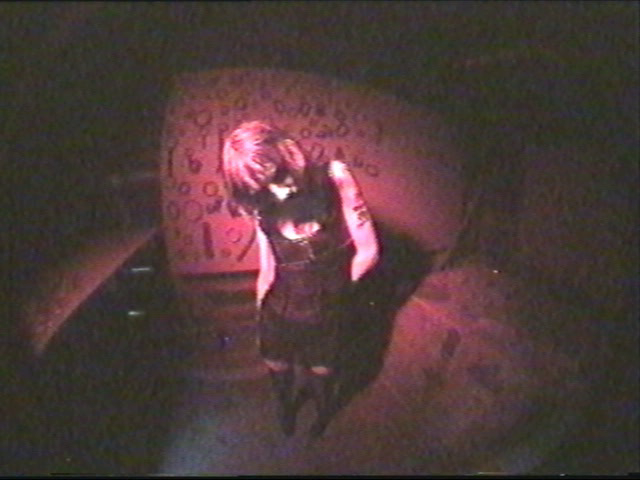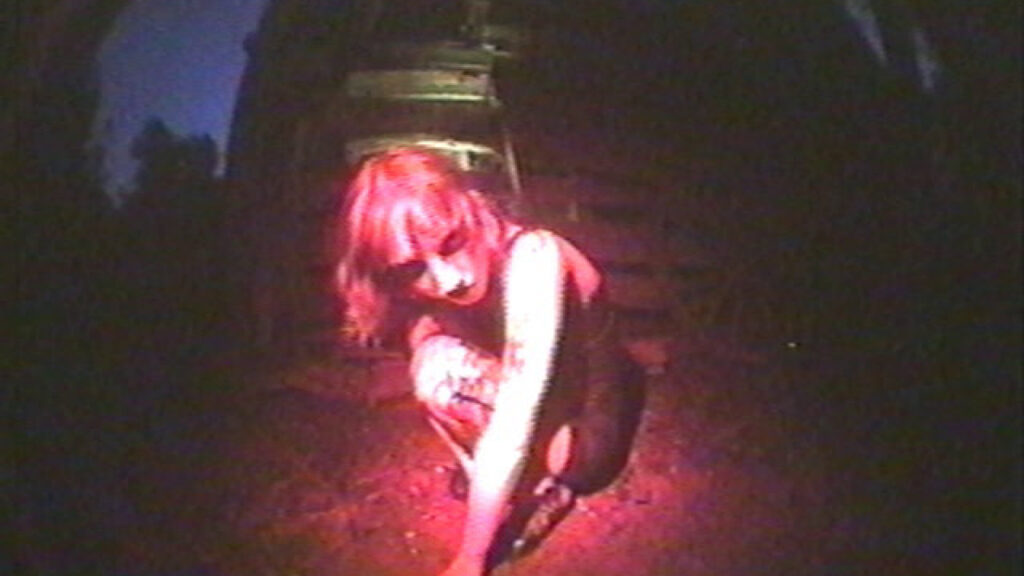Like a hooded figure emerging from the shadows of a crumbling Welsh castle, Ekstasis manifests chaos and retribution on Valle Crusis—a spellbinding descent into realms of abstract noise, haunting ambience, and visceral catharsis. The London-based act, whose name comes from the Greek for “outside of the self,” conjures soundscapes that exorcise the deepest recesses of the psyche through unholy rituals of cacophony and horror. Though Valle Crusis marks a potent artistic statement, Ekstasis is no newcomer to the UK’s experimental/noise underground; the artist has previously supported esteemed genre forces like Hide, Helm, Kavari, and Cremation Lily—key purveyors of the abrasive, boundary-pushing realms that Ekstasis occupies.
Within Valle Crusis, we are submerged into their world from the outset on “Rabbits Moon,” a formless droning mass of synth tendrils enveloping the senses in dissonant crescendos. The trance is abruptly severed by “Blush,” a dichotomy of profound emptiness pierced by shrill chromatic screams, like a silent wail echoing through an abyss. Ekstasis taps into primal fears akin to that displayed by a damned character in a Kubrick film, channeling the grand guignol scores of Krzysztof Penderecki as discordant strings descend into guttural evocations from realms beyond.
A fundamental component of the abrasive, unsettling textures on Valle Crusis stems from Ekstasis’ use of unconventional sound sources. Instead of just synthesizers or traditional instruments, the project incorporates homemade tape loops which add layers of warped, degraded noise. Ekstasis mics up chains and other metallic objects, picking up the clangs and scrapes as unique percussive elements. On the harsh industrial grind of tracks such as “Veins,” you can hear these bizarre clanking textures blending with the synth tones, resulting in constructions that sound both organic and synthetic at the same time. By pushing the boundaries of what counts as a musical “instrument,” Ekstasis generates truly alien, confrontational sound worlds that cross over from the physical into the uncanny.
That harrowing industrial pound of “Veins” conjures visions of infernal factories, the type that may have scarred the landscapes of Ekstasis’ Bristol and London domiciles during their dour industrial heydays. Relentless machinery screeches mix with piercing glossolalic vocals in torturous unison, like the wails of damned workers echoing through Mephistophelian assembly lines. The clanging rhythms churn and grind with a remorseless intensity as if building inexorably towards a hellish climax of punishment and immolation.
Rage, righteous or unjust, is a ubiquitous theme throughout the EP. There is a sense that these abrasive noise barrages are not merely abstract experiments, but primal scream therapy writ large on a scale that would leave Arthur Janov in awe. The fury reaches its visceral apex on “Sanctity with Rage,” where the very title lays bare the juxtaposition. Ominous droned synths give way to what sounds like exorcised banshees escaping their shackles, a maelstrom of anguished roars and spectral shrieks. By immersing the listener in their lingua ignota of ire, Ekstasis seems to be positing noise as the ultimate emancipatory vehicle—a sonic shamanism to expel buried savageries.

On the title track, Ekstasis reads arcane incantations over low-frequency drones, accompanied by frenetic analog synth rasps in wretched matrimony. The harrowing intensity subsides into an uneasy calm, but not before the final track “Annwn” delivers one final gut-punch—a tormented woman’s pleas sampled into the nightmarish fabric: “It’s not my fault Charlie… you promised he wouldn’t get me!”
This EP is an apotheosis of sound desecration as a sacred rite. Ekstasis pays fealty to the abrasive pioneers of industrial such as Throbbing Gristle and the power electronics of Whitehouse, filtering these influences through a contemporary lens of noisescape composition. There are echoes of the stark minimalism of Thomas Koner, the hauntological dread of Demdike Stare, and the harsh narrative tableaus of Pharmakon’s brutalism.
Yet Valle Crusis occupies its own realm, one steeped in folklore and landscape. Ekstasis professes a “spiritual connection with music that happens less so in the cities and more so in remote locations,” having felt tranquillity amongst the “swamps and forests of Appalachia” with their wild tensions. The artist’s very moniker stems from the urge to achieve self-transcendence through sound.
The cover art for the EP is a perfect exemplification of Ekstasis’ affinity for locations clandestine and remote. The artwork, displaying Ekstasis looking desolate surrounded by what appears to be sinister grey-green woodland, appears suitably grainy and weathered as if recovered from some eldritch crypt. Given the indecipherable nature of the artwork’s background, there is scope to deduce Ekstasis’ setting to be the ruined castle of Valle Crusis itself, complimenting the sonic atmosphere infused with the wild mysticism of the Welsh valleys. This avant-garde project is throughout an ode to the various landscapes that Ekstasis has called home—from the rolling hills of North Wales to the obdurately industrial corners of Bristol and London’s haunted outer reaches.
By plumbing the deepest strata of our primal subconscious, harnessing the dread energies of the slipstream between civilization and nature’s wild frontiers, Ekstasis has crafted a work of disquieting genius on “Valle Crusis.” This is music for ritualistic purgations, to purge the demons that lurk in the shadowed recesses of country estates and derelict urban edgelands alike.





